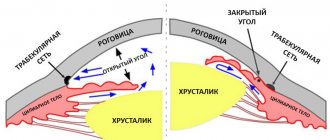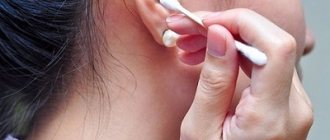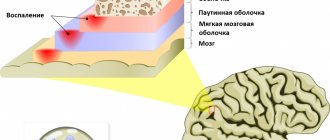Nasal pain and accompanying symptoms
As a rule, pain is not the only unpleasant symptom that worries a child. It may be accompanied by other unpleasant physiological manifestations:
- swelling and nasal congestion;
- discharge from the nasal passages;
- feeling of pressure in the bridge of the nose;
- frontal headache;
- decreased sense of smell;
- nosebleeds;
- increase in body temperature.
Typically, clinical manifestations depend on the nature of the hidden pathological processes. If parents respond to these signals in a timely manner and seek help from a doctor, the child’s treatment will not be so difficult and lengthy.
We care about your health
Epithelial tumors
Papillomas. There are papillomas of the vestibule and the nasal cavity. The first ones are gray in color, dense, villous surface, small in size, not malignant. It is believed that papillomas are caused by viruses from the family of papillomoviruses types 6, 11 and 16. Papillomas of the nasal cavity primarily affect the mucous membrane. They often recur after surgical removal. With anterior rhinoscopy or endoscopy, papillomas are gray-white in color, soft in consistency, single or multiple, bleed when touched, and resemble cauliflower. Treatment of nasal papillomas is predominantly surgical or cryodestruction. Surgically removed material should be sent for histological examination due to the possibility of malignant degeneration (transitional cell carcinoma). Another problem in the treatment of these patients is the frequent recurrence of papillomas. To prevent it, it is recommended to prescribe interferon drugs - domestic Laferon or foreign intron A. The method of treatment with Laferon consists of inhalation administration at the beginning of therapy (1 million Laferon is diluted in 20 ml of 0.9% NaCl solution). Inhalations continue for the first 10 days, then Laferon is prescribed intramuscularly once a day, at a dose of 1 million units, for 20 days. Some clinics determine the titers of antibodies to it to monitor the presence of the virus in the blood serum. When the levels increase above 1:200 in the blood of patients, antiviral drugs (Zoverax or others) are prescribed. Papilloma viruses also infect the cervix, which leads, in less pathogenic types, to the occurrence of condylomas.
Inverted papilloma. Called due to the ability of squamous epithelium to invaginate in the form of a wide ribbon into the connective tissue, these tumors have destructive growth, recur and become malignant. They are also known as columnar cell papillomas.
Adenoma is a benign tumor of the glandular epithelium of the nasal mucosa. It mainly affects the lower parts of the nasal cavity on a broad base with a smooth surface. Characterized by slow growth. The tumor is erysipelas-gray in color, no more than 2 cm in size, and is accompanied by rapid growth, germination into adjacent tissues, and changes in the histological structure. Its treatment is surgical. The removed material should be examined histologically.
Nonepithelial tumors
Hemangioma is a tumor developing from blood vessels, similar in nature to developmental defects. What it has in common with other tumors is rapid growth, during which hemangioma destroys surrounding tissue and causes a cosmetic and sometimes functional defect. In 1863, Vikhrov published a macro-microscopic classification of hemangiomas, dividing them into capillary, cavernous and racemose (branched). Subsequently, this principle was included in many classifications.
Today, this classification is used, which includes additional data on tumor growth, its spread, blood supply characteristics and relationship with large blood vessels.
True hemangiomas: 1) capillary (simple): exophytic (venous and arterial type); 2) cavernous: mucous-submucosal; diffuse (spreading into depth); 3) branched (angiodysplasia); 4) mixed (angiofibromas, hemlymphangiomas, branched with cavernous, branched with Barre-Mason glomusangiomas, etc.).
Diagnosis of tumors in the nose
- Routine external examination of the patient. Palpation of the tumor.
- Anterior and posterior rhinoscopy.
- Examination of the nasal cavity and paranasal sinuses using an endoscope. Diaphanoscopy.
- Comprehensive X-ray examination.
- CT and MRI.
- Cytological examination of discharge obtained during puncture, sinus lavage, as well as nasal discharge.
- Histological examination of pieces of the neoplasm.
Treatment of nasal tumors
- Surgical removal of the tumor (if it is of significant size with preliminary embolization of the vessels feeding the tumor).
- Cryodestruction of the tumor.
- Sclerosis therapy.
- Radiation therapy in combination with surgical removal (for tumor malignancy).
Bleeding polyps of the cartilaginous part of the nasal septum are red, round in shape with a smooth surface. They are characterized by frequent bleeding. Treatment is surgical.
Fibromas, myomas, lipomas are rarely found in the cavity and paranasal sinuses. Angiofibroma, fibromyoma, osteofibroma, adenofibroma, neurofibroma, histiocytoma may occur. The treatment of these tumors is surgical.
Osteomas. They are most common among benign tumors of the paranasal sinuses, in people 20-40 years old. According to some authors, osteomas are localized in the area of bone sutures in 50% of patients. Histologically, three forms of osteomas are distinguished: compact (ivory), spongy and compact-spongy. Osteomas are extremely slow growing and predominantly asymptomatic. They are often discovered incidentally during X-ray or CT scanning. With large tumors or localization in the main sinus, a headache may be observed; with osteomas of the frontal sinus, exophthalmos, diplopia, and visual impairment may be observed.
Treatment of osteomas is exclusively surgical. The sooner it is carried out, the better success will be achieved. Mandatory histological examination of the removed tumor. Sometimes, with compact osteomas of the main sinus, when there is a risk of serious complications (damage to the cavernous sinus, internal carotid artery), surgical intervention should be carried out jointly with neurosurgeons.
Chondromas. They develop from the remains of the primordial cartilaginous skeleton and can be attributed to developmental anomalies. Tumors are characterized by slow expansive growth with penetration into the orbit or cranial cavity. They often recur and, in addition, can become malignant. Osteochondromas can occur in the nasal cavity. Neurogenic tumors
Paragangliomas (glomus tumors, chemodectomas) grow from small cell groups of the nasal mucosa. Rarely found in the nasal cavity. The tumor has infiltrative growth, often recurs, and malignantly degenerates. In such cases, it often grows into the skull and brain.
Tumor-like lesions
Tumor-like diseases are described in the relevant sections of the reference book, but fibrous dysplasia deserves special attention.
Fibrous dysplasia. Refers to tumor-like lesions of the nose and paranasal sinuses and is a defect in the formation of osteogenic mesenchyme. Characterized by the replacement of bone with fibrous tissue. Some authors consider the disease to be a developmental anomaly of unknown origin. Diagnosis of the disease is radiological but mainly histological confirmation is the main motive for choosing treatment. This lesion is also known as fibrous osteodystrophy, osteitis fibrosa. The bones of the upper jaw, main and frontal bones are predominantly degenerated. Treatment is surgical. The affected bone areas are removed. Relapses are possible. Sometimes such patients are treated in dental hospitals. V.
Malignant tumors of the nose and paranasal sinuses
The incidence of malignant tumors is steadily increasing by 2.6-3.0% per year. Malignant tumors of the nose and paranasal sinuses account for about 0.5% of cancer incidence statistics. In 2002, per 100 thousand population of Ukraine, the incidence of malignant tumors of this localization was 0.59, 287 patients were diagnosed for the first time. For comparison, in Belarus in the same year it was 0.7, 70 patients were identified. In Russia, 832 patients were detected for the first time, the incidence was 0.6. In the United States, 2,000 patients with cancer of the nasal cavity and paranasal sinuses are diagnosed annually.
Localization of tumors in the nose and paranasal sinuses, which are a system of narrow thin-walled cavities rich in nerves, blood and lymphatic vessels, promotes growth and rapid spread to adjacent formations, which significantly complicates treatment and leads in many cases to death.
Among the factors that cause malignant growth in this area are wood dust, petroleum products, professions associated with exposure to potent compounds - benzenes, acids, alkalis, nickel ores, varnishes and smoking. Among the factors that contribute to the growth of these tumors, chronic diseases are also noted - rhinitis, polypous sinusitis, ethmoiditis, frontal sinusitis, viral agents. The Epstein-Bar virus is considered the etiological factor of malignant lymphomas, papillomovirus types 11, 16, leads to the occurrence of transitional cell carcinoma and papillomas in the area of the nasal epithelium.
In most cases, the disease affects people of working age. Early clinical manifestations in people with tumors of this localization are insignificant and therefore the disease is more often detected in stages III – IV, when the walls of the cavities are already destroyed and penetration into adjacent anatomical areas begins.
According to most authors, malignant tumors are most often localized in the maxillary sinus (75-80%), in second place are the cells of the ethmoidal labyrinth and the nasal cavity (10-15%), less often the sphenoid and frontal sinuses are affected (1-2%).
When treating people with malignant tumors of the nose and paranasal sinuses, surgical, radiation and chemotherapy methods are used, but the results remain unsatisfactory, while the number of patients with this pathology does not decrease.
It should be noted that the palette of morphological forms of malignant tumors of the nose and paranasal sinuses is diverse.
Basal cell carcinoma occurs more often in various areas of the skin of the nose. Trichoepithelioma also belongs to basal cell malignant neoplasms.
Melanoma is observed in 2-3% of malignant tumors of this location. Most often it is located in the nasal cavity. The tumor is characterized by polymorphism. However, the sarcomatous form predominates. Early symptoms include bleeding and difficulty breathing. Melanoma metastasizes in 60% of cases to the cervical lymph nodes.
Clinical picture of tumors in the nose
Clinical manifestations of malignant tumors depend on the stage of the disease, localization, growth form, as well as the morphological structure of the tumor.
Symptoms:
- Pain. They appear sharply when localized in the upper jaw along the n. trigeminus. When the tumor is localized or grows into the area of the pterygopalatine fossa, shooting pain appears in the area of the eyeball or temple, which indicates irritation of the n.auriculotemporalis. Pain as the first sign of the disease was observed in 17% of patients.
- Impaired nasal breathing. When the tumor was localized in the nose, similar complaints were noted in 62.8% of patients. Patients whose tumor did not spread beyond the paranasal sinuses, or those whose tumor grew towards the cheek, temporal bone, alveolar process, or orbit did not complain of nasal breathing disorder.
- Nasal discharge. More often they are unilateral mucopurulent with an admixture of blood.
- Headache of various types, often with various paresthesias in the facial area on the side of the tumor. Often in such cases neuralgia is diagnosed. If they are not treatable, you should always remember about the possible development of a malignant disease.
- Pain in the teeth, deformation of the face, nose, lacrimation, exophthalmos, deformation of the hard and soft palate - these symptoms can occur to varying degrees with malignant tumors of the nose and paranasal sinuses.
Malignant tumors of the mucous membrane of the maxillary sinus occur without symptoms for a long time. Clinical manifestations depend on the starting point and size of the tumor. Tumors arise on all walls of the sinus, from the superomedial part of the sinus they quickly cause bleeding, swelling of the eyelids, lacrimation, exophthalmos; when they grow forward, they grow into the anterior wall and then in the cheek area they can be identified by palpation. As the tumor grows downward, it grows into the hard palate and changes its configuration. The growth of a tumor from the medial wall into the nasal cavity makes breathing difficult and leads to the formation of polyps. If the tumor grows predominantly in the direction of the posterior wall with germination into the fossa, the nasal part of the pharynx, then it causes pain.
When a tumor destroys the orbital wall, the process spreads to the orbital tissue, which is manifested by exophthalmos, decreased visual acuity and diplopia. Malignant tumors of the ethmoid labyrinth. Isolated lesions of the labyrinth cells are observed in 10% of cases.
When the tumor spreads towards the orbit, the thin wall of the latter is destroyed and tumor growth into the orbit is observed.
From the cells of the labyrinth, neoplasms can also spread to the maxillary, sphenoid sinuses, anterior and middle cranial fossa, and nasal pharynx.
Tumors of the sphenoid (main) sinus. Primary cancer of this location is extremely rare. Typically, these are tumors that extend from the maxillary sinus or ethmoid. The earliest symptoms are ocular, often damage to the efferent nerve, less often - decreased vision. Patients seek help from an ophthalmologist or neurologist. Characteristic orbital-superior syndrome (damage to the vessels and nerves that pass through the optic foramen and the superior orbital fissure), visual impairment, up to blindness, ptosis, diplopia, pain in the occipitotemporal and occipital regions.
Tumors of the frontal sinus are rare and have symptoms when affected, which do not extend beyond the sinus, similar to the symptoms of chronic frontal sinusitis. In recent years, CT and MRI have made it possible to differentiate this disease from mucocele, osteomyelitis and sinusitis. Symptoms depend on the direction of tumor growth. Germination downwards and medially leads to penetration into the orbit, ethmoidal labyrinth, exophthalmos appears, germination posteriorly - the anterior cranial fossa is affected, then a sharp headache, convulsions, and mental disorders are possible. Penetration of the tumor through the anterior wall leads to swelling and discoloration of the skin in the frontal area of the head.
Overview video of ENT surgery in Moscow, Kurkino and Khimki:
What can cause a pain symptom?
Pain in the nasal cavity or bridge of the nose can vary. Intense or aching pain in the nose can be triggered by:
- trauma of varying severity;
- inflammatory process in the paranasal sinuses;
- acute inflammation of the sebaceous gland (furuncle);
- inflammation of the nasal mucosa, including allergic ones;
- accidental entry of a foreign body into the nasal passage;
- neoplasms affecting nerve endings;
- herpetic or fungal infection.
Thus, the cause of nasal pain is obvious to parents only if the child is injured. In all other situations, consultation with an otolaryngologist is necessary.
Functions of the nose
At rest, one adult takes approximately 16 inhalations and exhalations per minute through the nose. The breathing rate may increase during intense physical exertion and decrease during night sleep. In one breath, an average of 500 ml of air is inhaled, that is, 12,000 l / day. This air must be purified, heated and humidified. Breathing in untreated or cold air can lead to allergies or colds.
Main functions of the nose:
- Breath. Inhaled air enters primarily through the middle nasal passage, passing through the anterior sections of the nasal concha. Exhaled air flows through the lower nasal passage along the base of the nose.
- Protection. The film on the surface of the mucous membrane can absorb smaller impurities and particles and direct them, along with certain secretions, to the nasopharynx. Also, special proteins are formed on the nasal mucosa that support the protective function and are called “humoral defense”
- Conditioning. The nasal mucosa has a large surface and is equipped with an extensive vascular network and a large number of mucus-forming glands. Thanks to this, the nose warms and humidifies the inhaled air.
—
Types of diseases of the nose and paranasal sinuses
Let us denote the main ENT diseases that are localized in the nasal area and diagnosed by an otolaryngologist:
- rhinitis (runny nose): infectious, allergic, hypertrophic, atrophic;
- all forms of sinusitis: sinusitis, frontal sinusitis, ethmoiditis, sphenoiditis;
- adenoiditis - a disease of the nasopharyngeal tonsils;
- purulent-inflammatory diseases of the external nose (furunculosis);
- nasal deformities acquired due to injury;
- compensatory curvature of the nasal septum;
- neoplasms in the nasal cavity (cysts, polyps);
- nosebleeds.
In order to determine the pathology, the doctor uses a set of diagnostic measures that make it possible to identify hidden inflammatory processes, damage, formations, etc. It is important to do this on time - parents should take care of this.
Risk of complications from diseases and injuries
All possible clinical manifestations of pain in the bridge of the nose are caused by certain pathological causes; the condition itself cannot appear. There are rarely situations when such a symptom is provoked by emotional overstrain or an uncomfortable posture during sleep. But in any case, the symptom cannot be ignored, as this can lead to unpleasant consequences.
The resulting injuries with serious damage can cause further respiratory arrest due to the blockage of the airways by the damaged nasal septum.
Any disease that leads to the appearance of the symptom in question, without adequate therapy, threatens with further growth of the inflammatory process and the appearance of a purulent lesion, subsequently affecting parts of the brain. As a result, blindness, dementia, paralysis, and mental disorder may develop.
It is worth remembering that neglect of treatment of sinusitis threatens the formation of epidural abscess, meningitis, sepsis and osteomyelitis (a purulent process of the bone tissue of the forehead).
Diagnostic methods
Making a diagnosis includes the following instrumental, hardware and laboratory studies, including:
- rhinoscopy - examination of the nasal cavity and nasopharynx using speculums allows the doctor to visually assess the visible part of the nasal passages;
- endoscopy – examination of the nasal cavity using a fiberscope with image transmission to a monitor, which allows you to assess the condition of the mucous membrane and assess the degree of its swelling;
- X-ray diagnostics - radiography and computed tomography will help identify foci of inflammation in the paranasal sinuses and their boundaries;
- bacteriological examination of nasal secretions will help determine the causative agent of inflammation and select the appropriate antibacterial drug;
- Blood tests (general, biochemistry, ESR, etc.) will complement the information about the clinical condition of the small patient.
Based on the results obtained, the doctor will make a diagnosis and prescribe an adequate treatment plan. With timely treatment and strict adherence to its recommendations, the treatment prognosis is usually favorable.
Methods for treating nasal diseases
The main goal of treatment carried out by a pediatric otolaryngologist is to relieve pain, relieve inflammation and restore patency of the nasal passages. It is also equally important to strengthen the local and general immunity of the body. Thus, treatment of diseases of the nose and its paranasal sinuses can be:
1. medicinal:
- antibacterial therapy;
- vasoconstrictors and antihistamines;
- immunostimulating drugs.
2. local:
- rinsing the nose and paranasal sinuses (cuckoo method);
- intranasal blockades (introduction of medicinal drugs into the side wall of the nose);
- physiotherapy (UHF and UV therapy).
3. surgical:
- puncture (puncture) of the maxillary sinus;
- surgical intervention.
Let us remind you that surgical methods are used in exceptional cases when conservative treatment is impossible or has not brought the desired result. In this regard, we note that a puncture is a radical measure, which is resorted to if the purulent contents of the paranasal sinuses are not eliminated by medication. This will significantly improve the child’s condition and avoid serious complications. The procedure is performed under local anesthesia.
What are the consequences of delaying a visit to the doctor?
Rhinitis is the lesser of “all evils” that may be hidden behind a painful symptom. Delaying the situation can result in the following serious complications:
- Sinusitis is inflammation of the maxillary sinuses. The danger is that the infection can spread to the eyes, brain, ears, which are located in close proximity to the sinuses.
- Frontitis is inflammation of the frontal sinus. This dangerous disease, which occurs against the background of untimely and improper treatment of rhinitis, can even lead to a brain abscess or meningitis.
- Otitis is an inflammation of the outer and middle ear. This disease can be triggered by pathogenic microorganisms that enter the ear from the nasal cavity, through the auditory tube, or when a child sneezes or incompetently blows his nose. This complication occurs quite often (in 80% of cases) in children under 3 years of age.
- Abscess of the nasal septum. An ordinary hematoma formed after a nasal injury can provoke inflammation and suppuration in the area of the nasal septum if an infection occurs. As a result, the cartilage may suffer, even to the point of its complete destruction.
- Blockage of the upper respiratory tract, which can occur due to foreign objects entering the nasal cavity. Small toys or candies in the form of dragees, which a child 1.5-3 years old can accidentally push into the nose, can partially or completely restrict air access.
In order not to lead the situation to the above-mentioned complications, parents need to contact a pediatric otolaryngologist in a timely manner, and not engage in self-diagnosis and self-medication. To conclude the “sore topic,” we remind Kaliningrad residents of the telephone numbers by which they can make a scheduled or urgent appointment with an otolaryngologist for their child:
+7 (4012) 357-773 or +7 (4012) 973-100.
To schedule a consultation, you can also fill out a preliminary application on our website using the red “book online” button.








